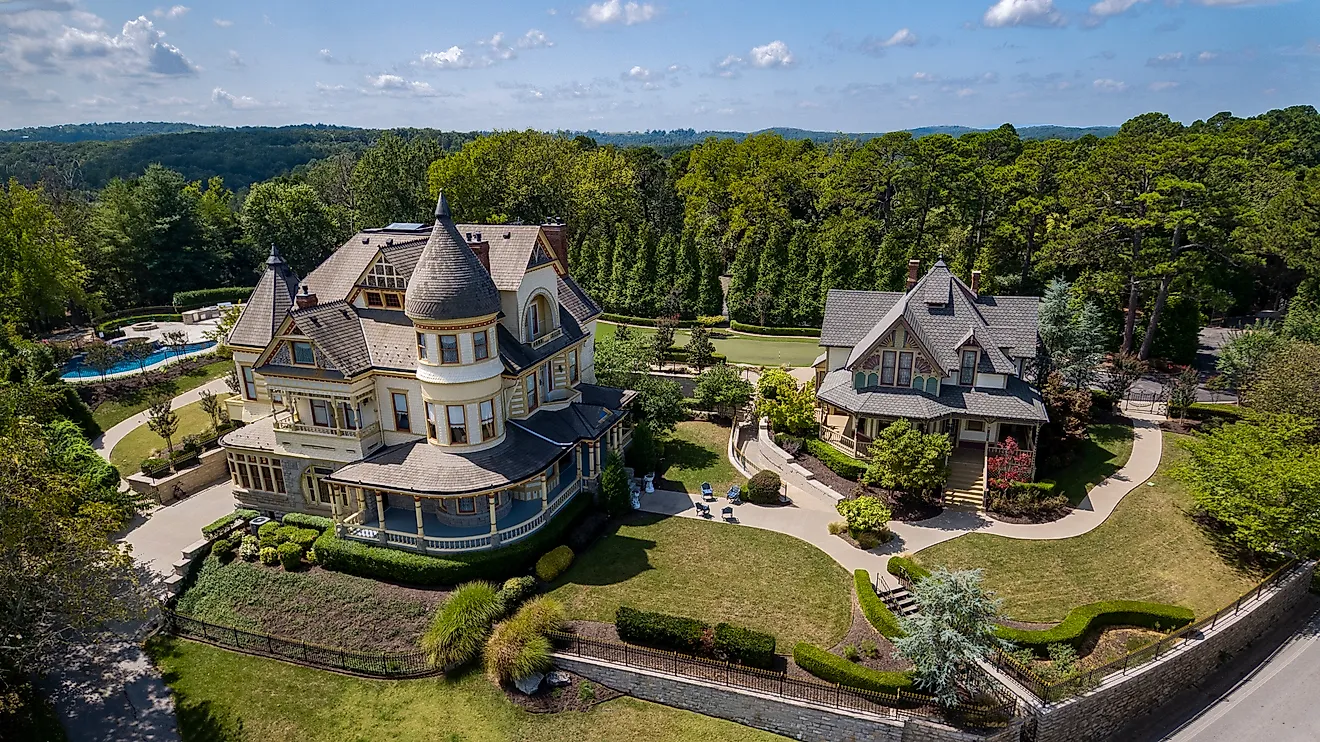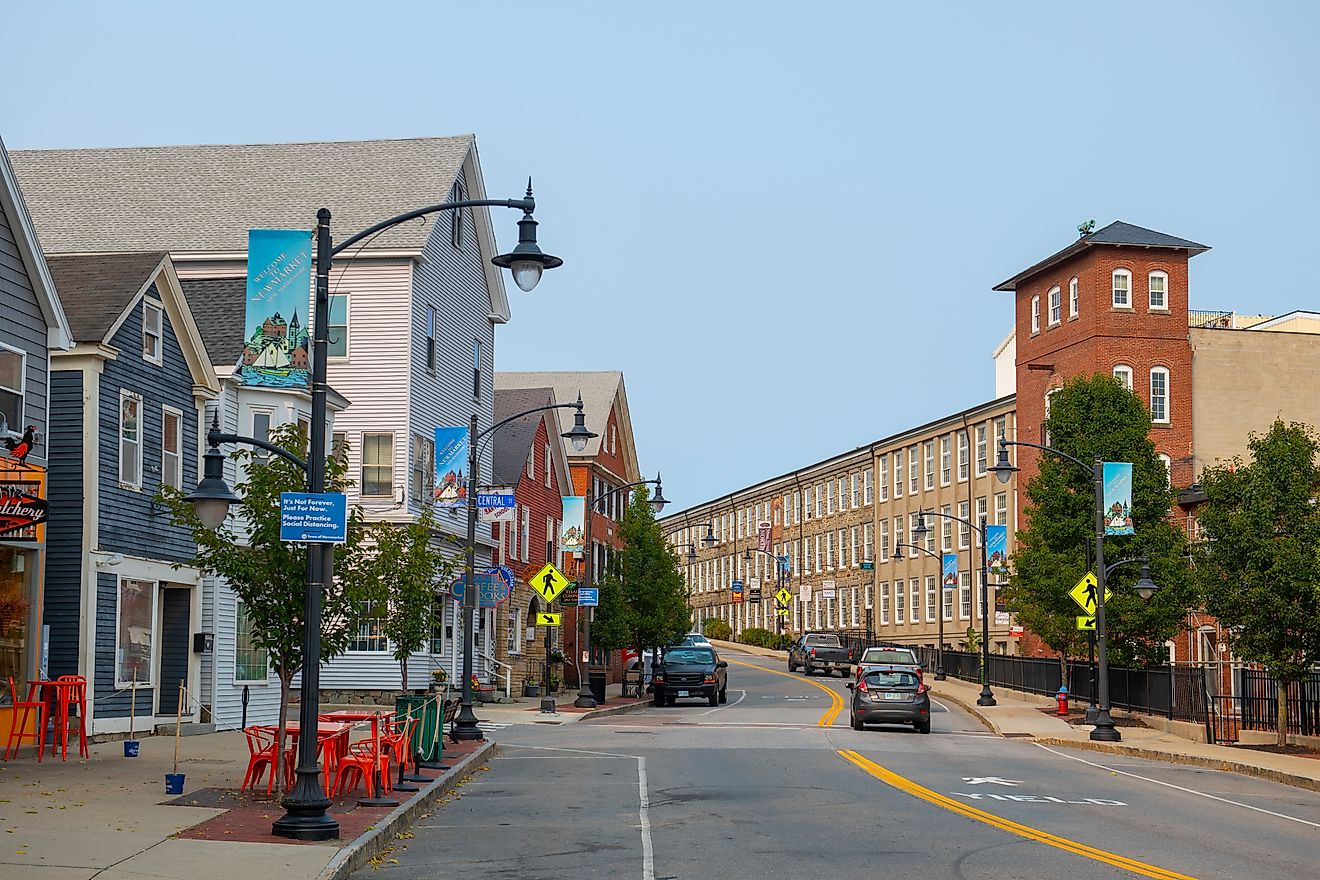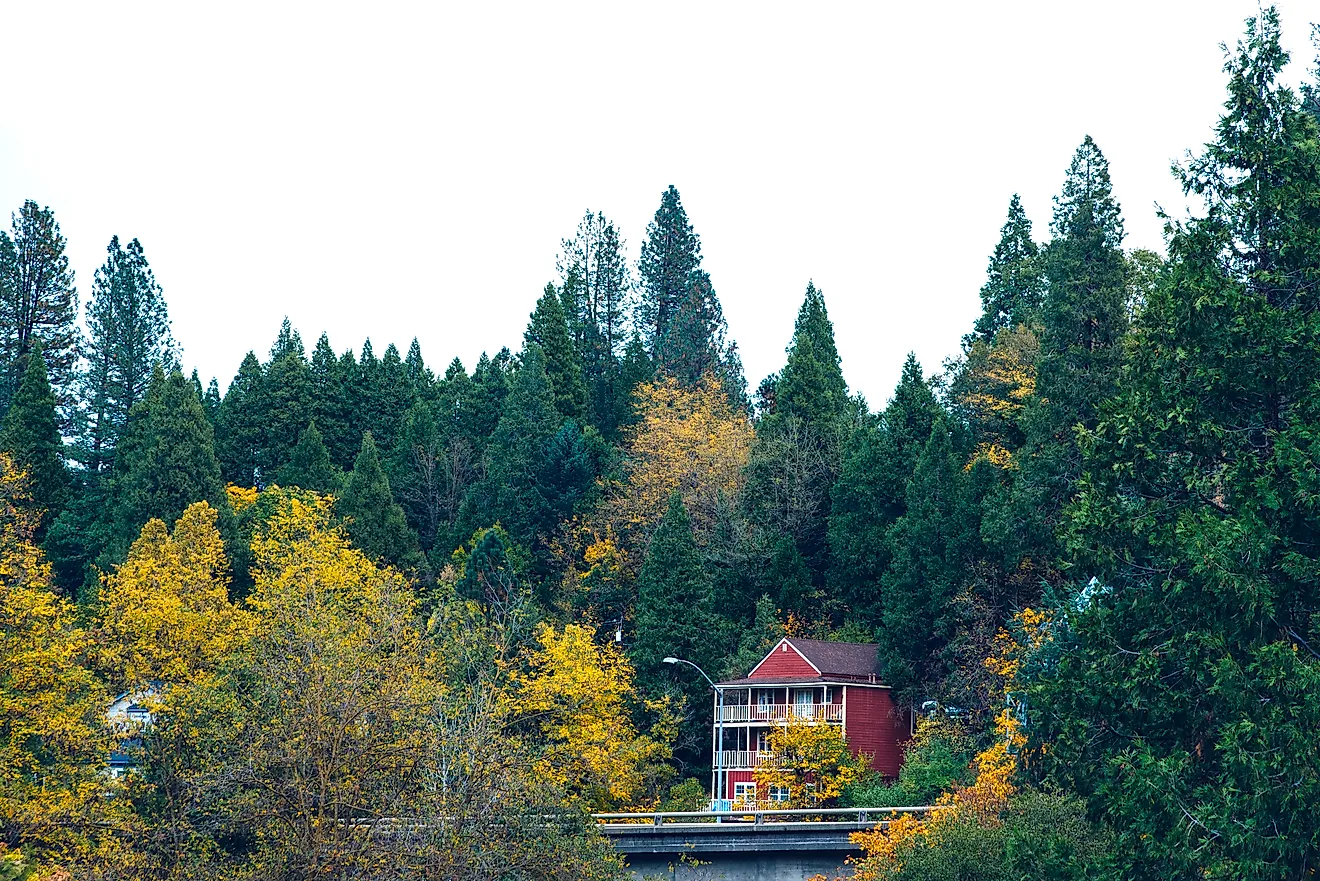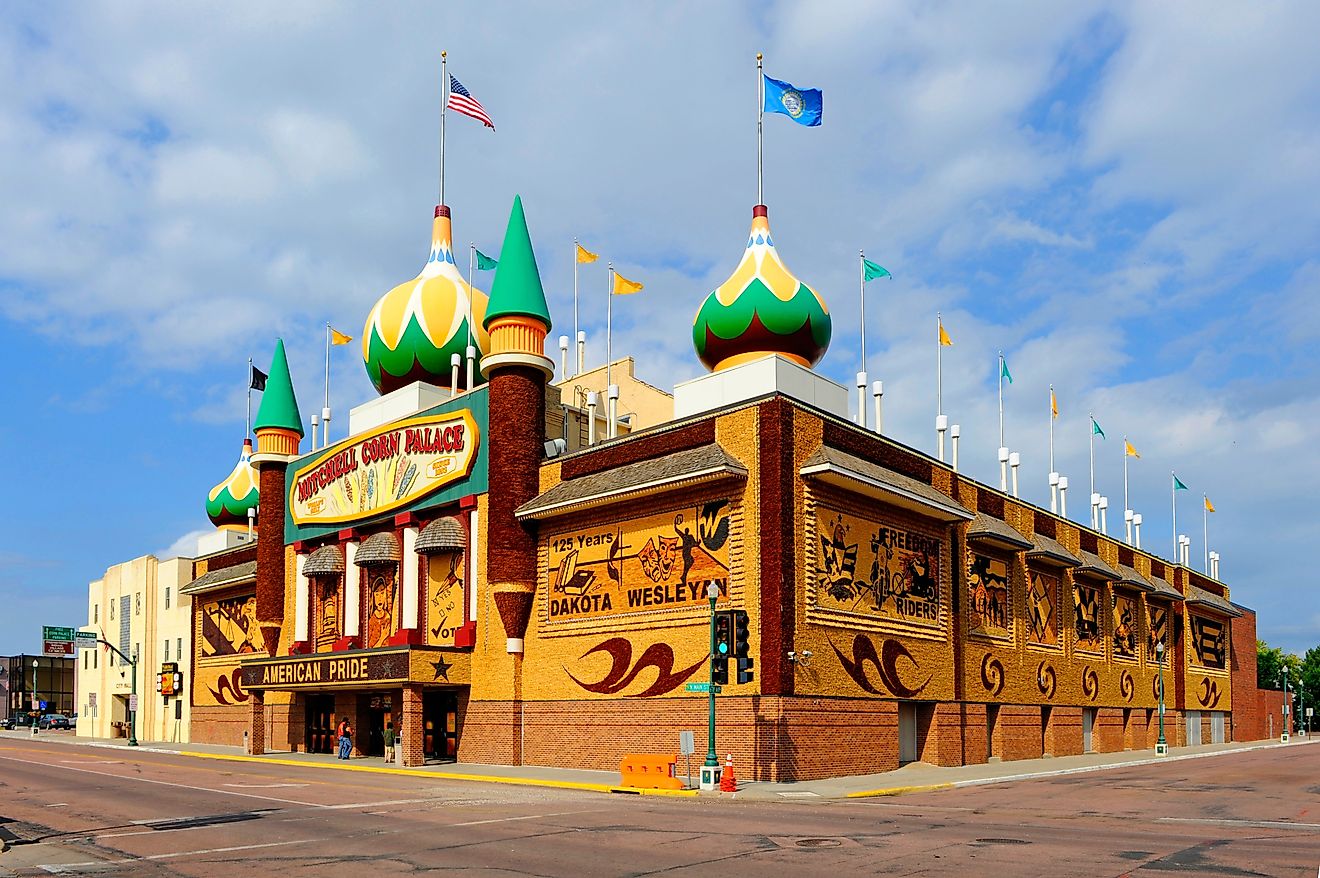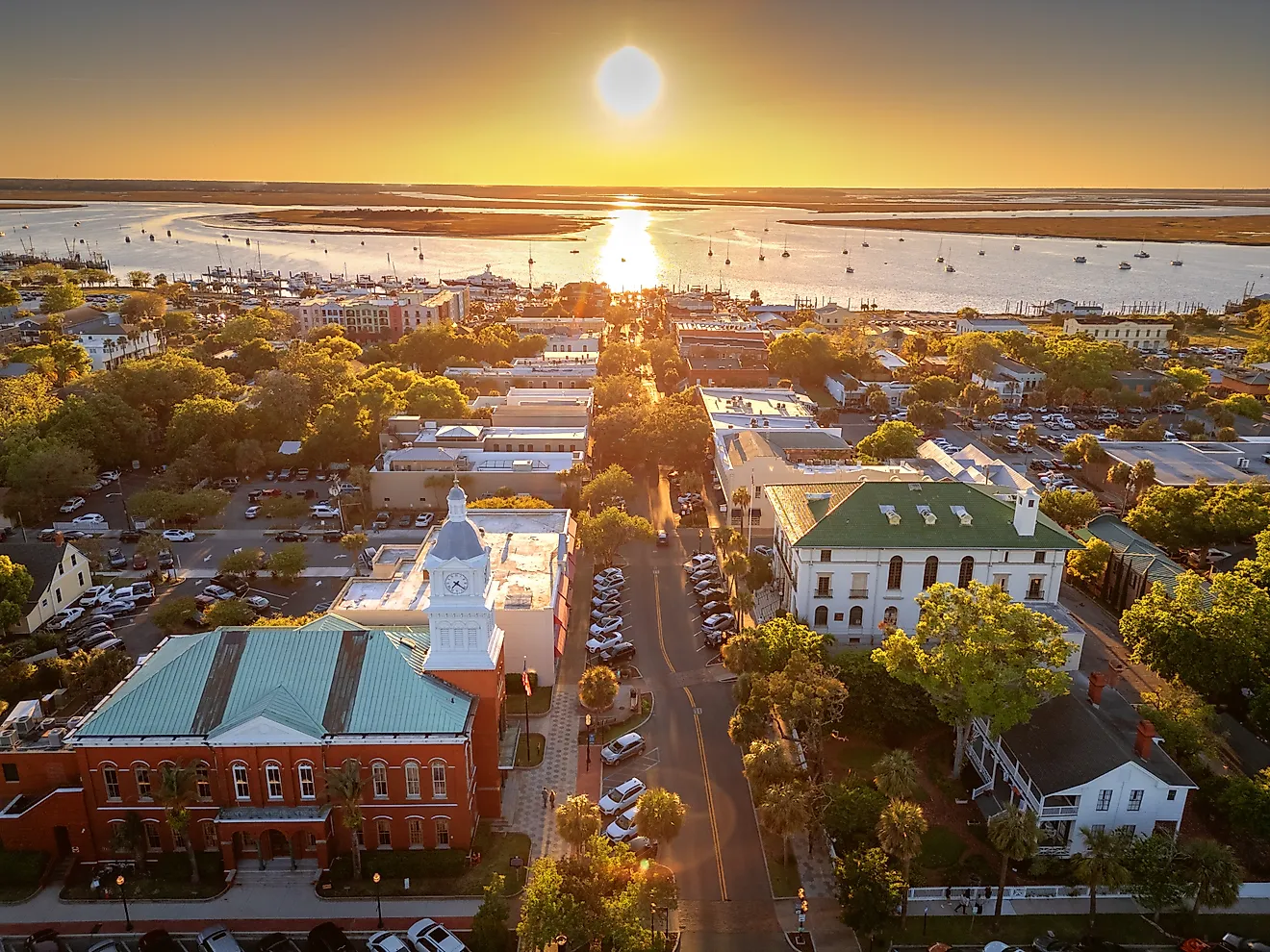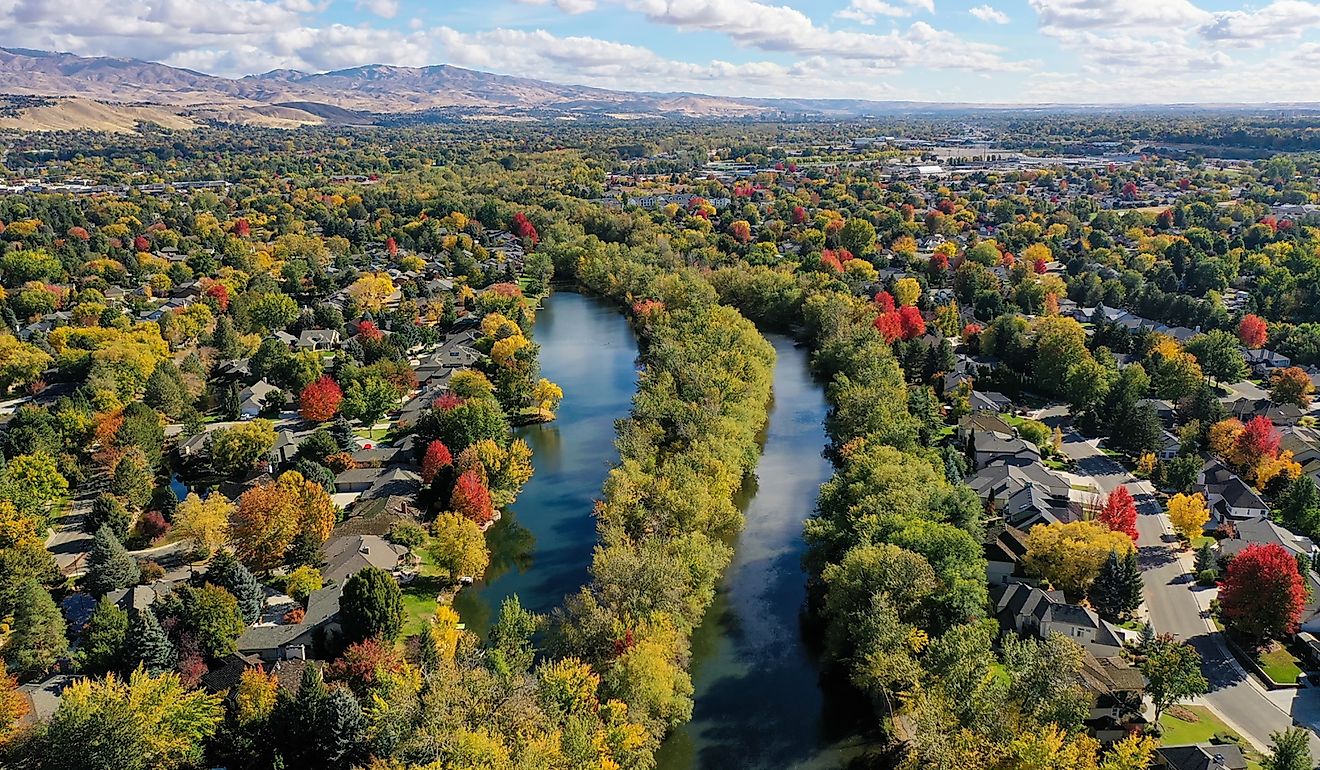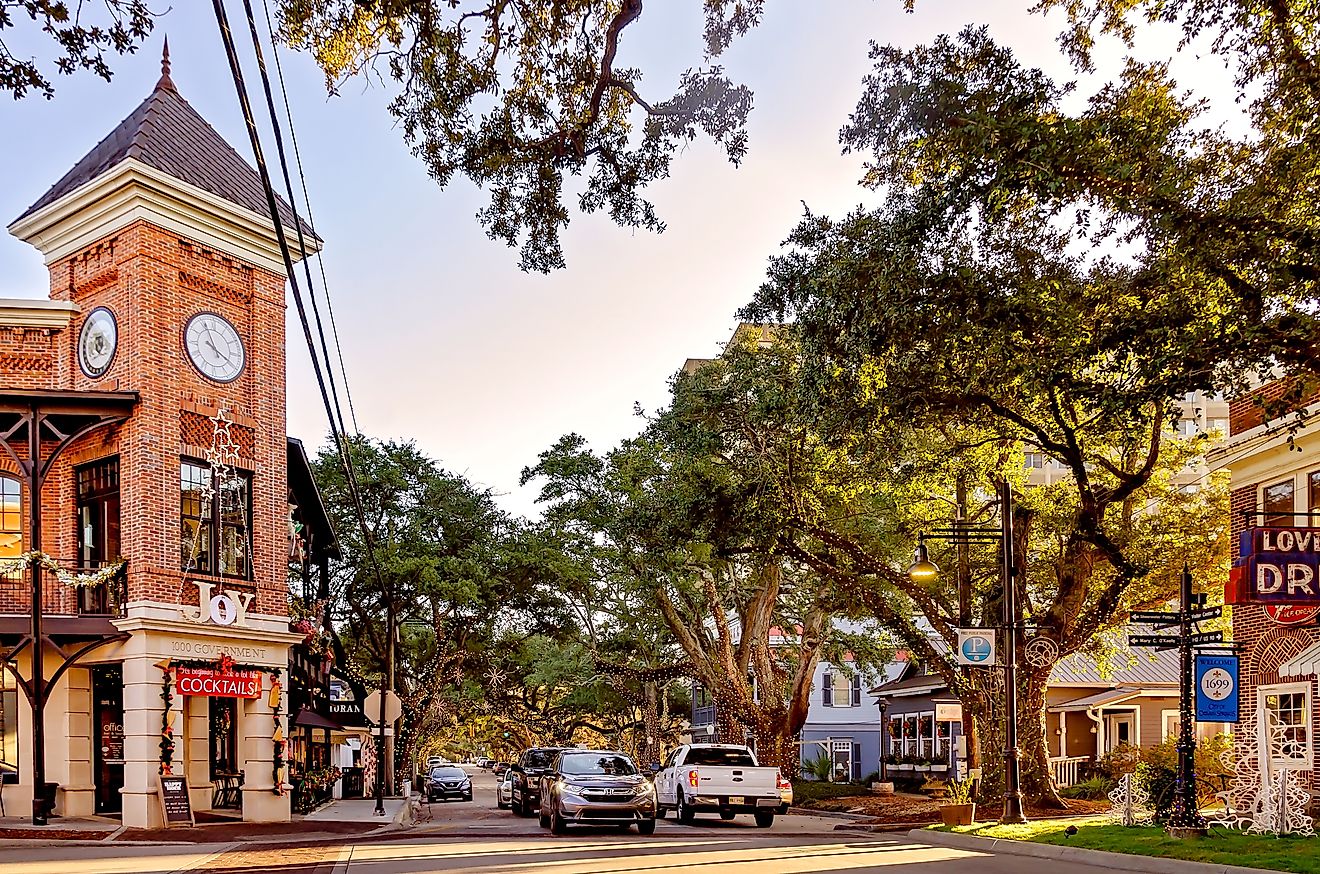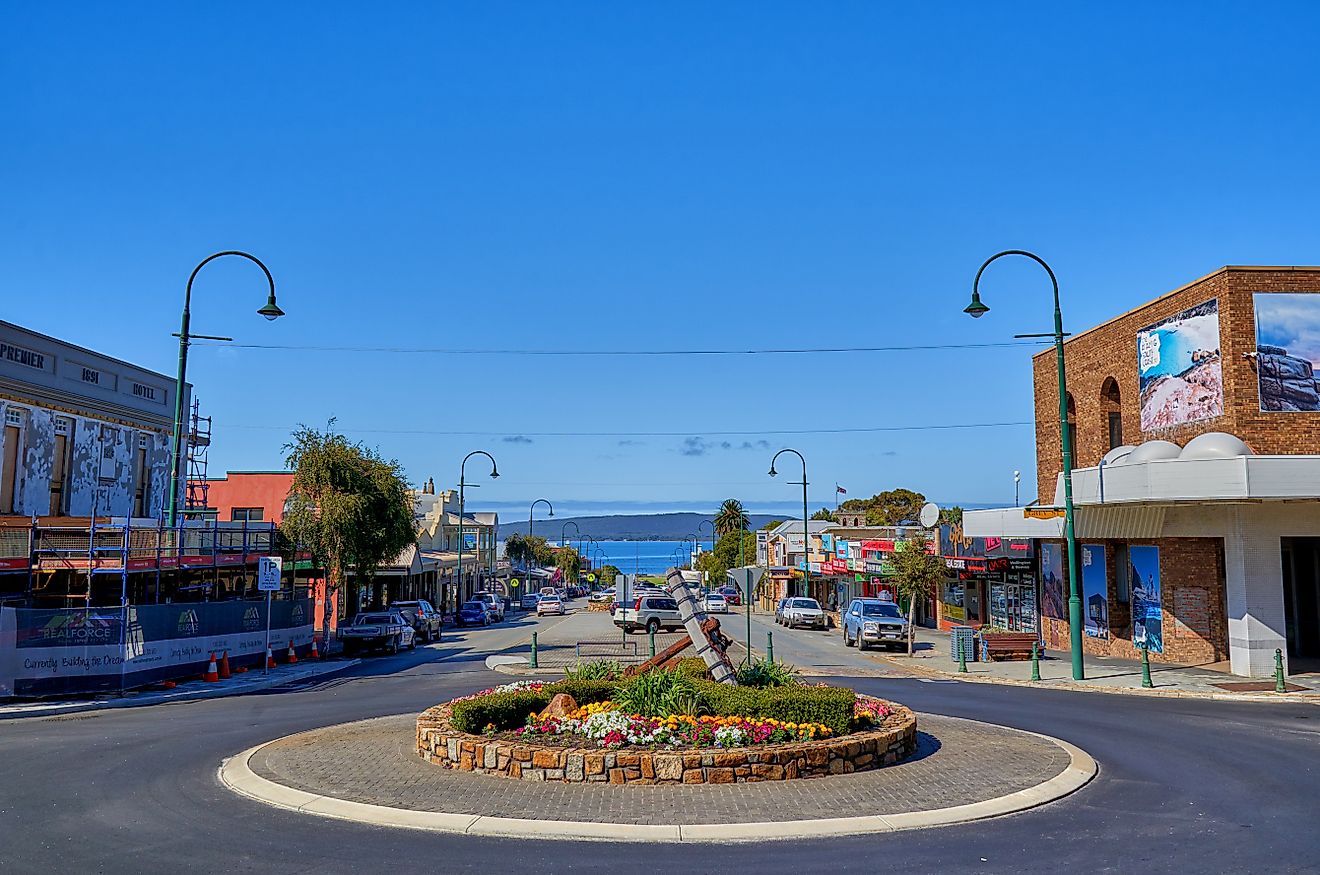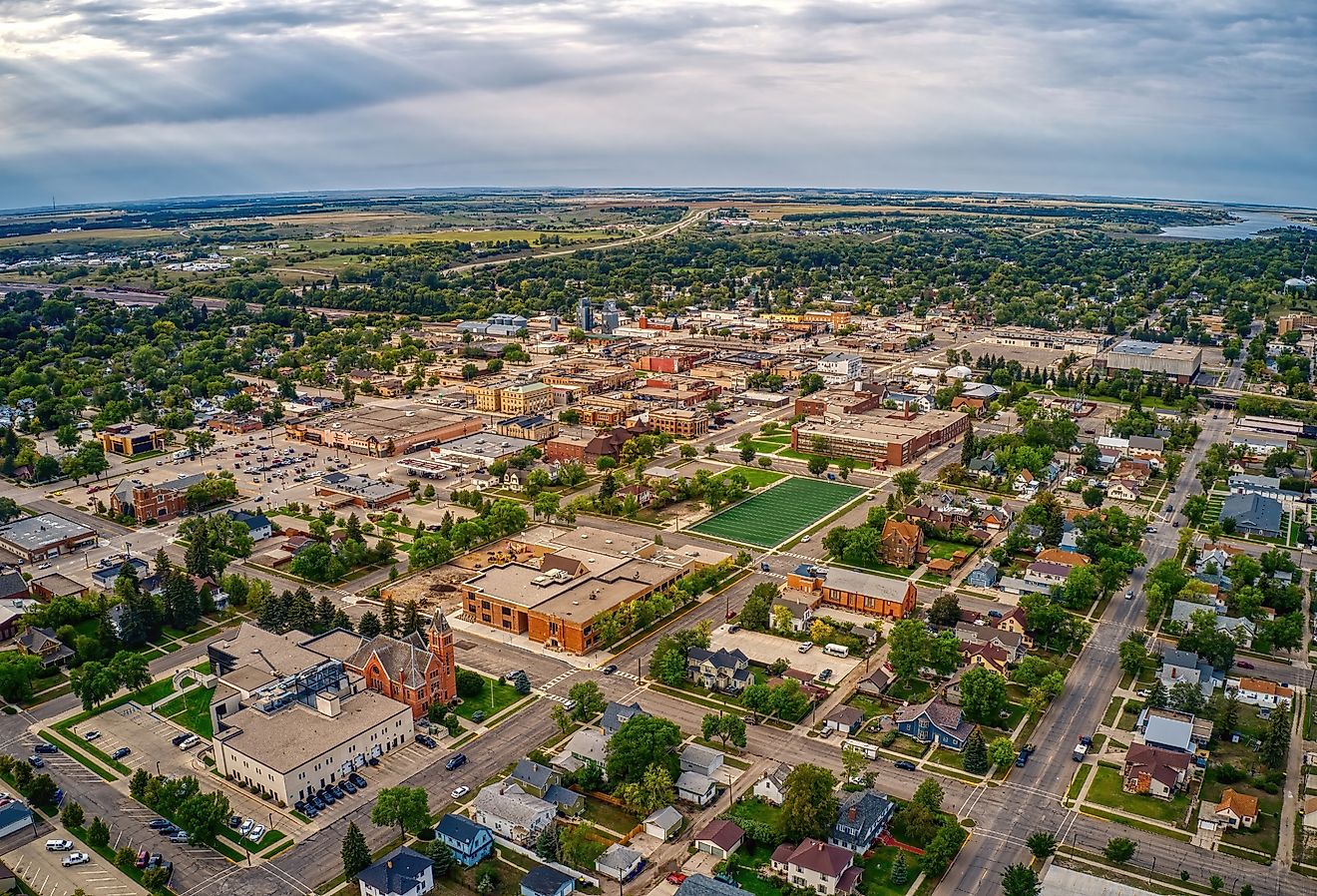
5 Most Beautiful Gothic Churches In Wisconsin
Dramatic, ornate, lofty. It’s no wonder that the 19th century Bishop, Rev. Henry Yates Satterlee proclaimed Gothic to be “God’s preferred architectural style”. Known for their towering spires, pointed arches, large stained glass windows, and intricate masonry work, Gothic cathedrals are works of art as much as architecture.
Before the Gothic era, churches were humble buildings with thick walls, small windows, and sturdy pillars, built in the Romanesque style, which favoured substance over style. In the 12th century, a noticeable shift occurred. Churches grew bigger, taller and more decorative as engineers and architects embraced the Gothic style that originated in France and quickly swept through Europe.
Lasting into the 15th century, Gothic architecture became the norm for cathedrals in significant cities. Thankfully many of these historical and architectural gems have survived the centuries and become major tourist attractions as well as places of worship. Some of the best examples today are Notre-Dame de Paris in France, Milan Cathedral in Italy and Canterbury Cathedral in England.
But you don’t have to go to Europe to marvel at stunning Gothic cathedrals. Wisconsin is home to several beautiful and well-preserved Gothic churches that are a must-see for history-lovers, architects, artists, and anyone looking for a unique experience on their midwest vacation.
Church of the Gesu, Milwaukee

Built in 1894, the Church of the Gesu in Milwaukee is a neo-Gothic church designed by Henry Koch who drew on his heritage as a German immigrant to give the building its European-style features. The facade consists of two towers, one 250ft and the other 215ft, linked by a gable with a large, round rose window.
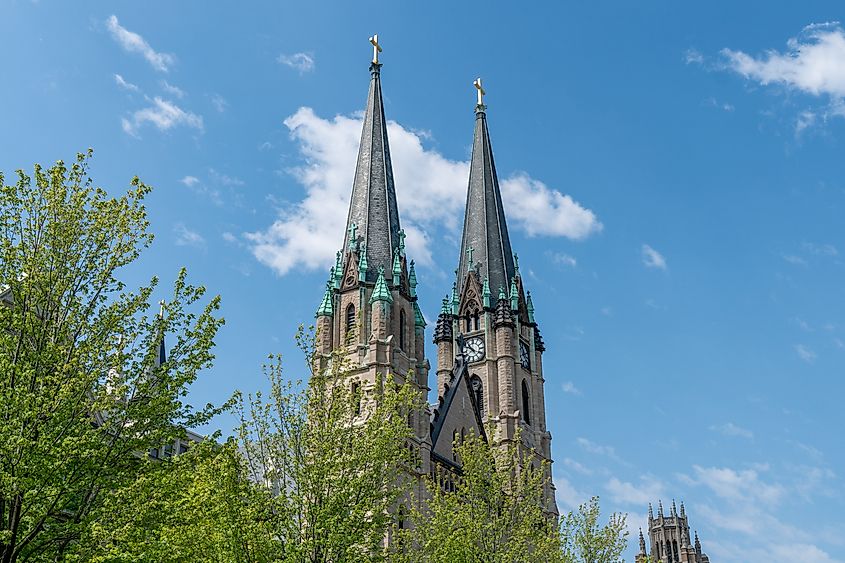
Visitors enter the Upper Church through a portico of three arches held aloft by four granite columns. As with most Gothic churches, one of the highlights for visitors is the dazzling stained glass windows. These were made at the Royal Bavarian Art Institute in Germany in the Munich style which is known for its beautiful blending of colors, romantic style, and detail.
The church is currently undergoing a multi-million dollar renovation project however it is still open for services and open to the public for those who want to visit and admire the architecture.
St Mary’s Catholic Church, Port Washington
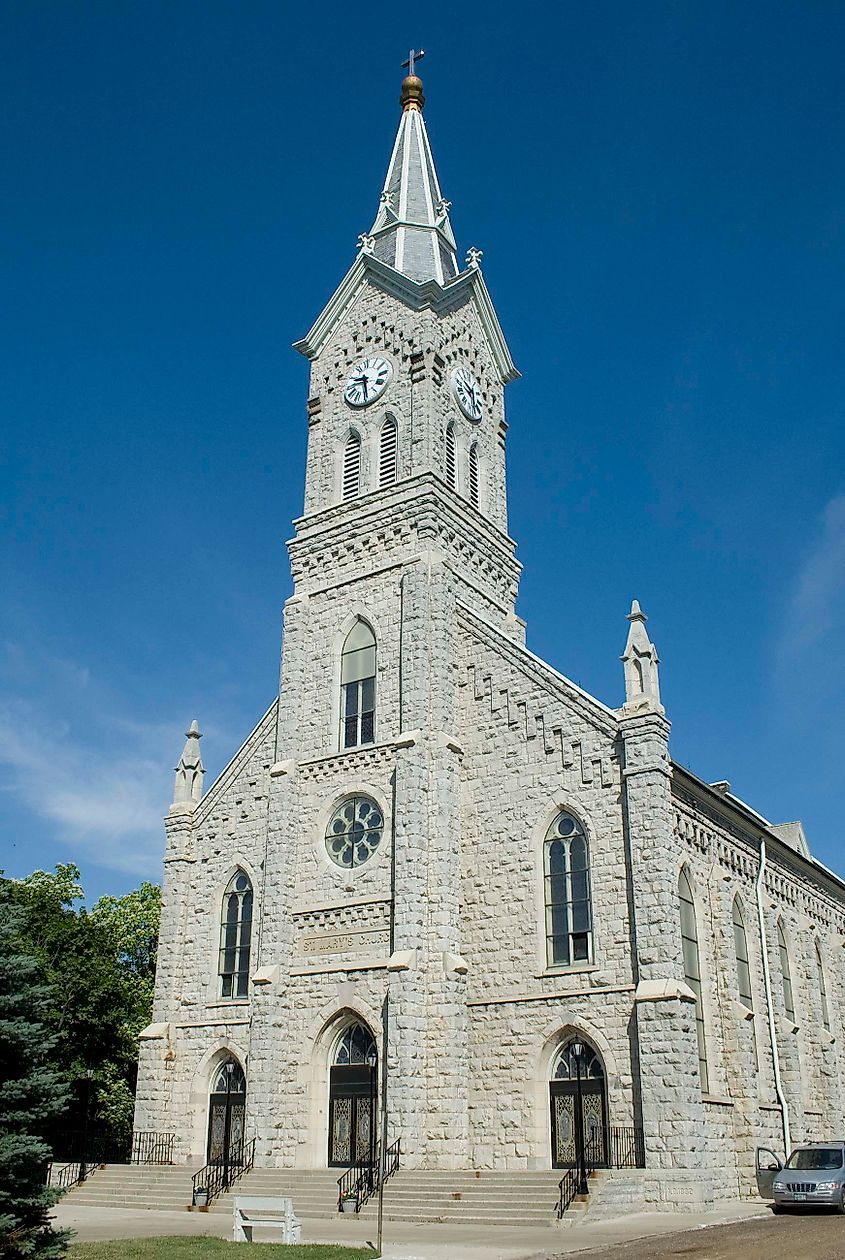
Small town Wisconsin is not the most likely setting for a towering Gothic church but visit Port Washington and you’ll see St Mary’s rising over the town’s skyline. This beautiful community church was erected in 1882 to replace a small frame church that had served the village for almost four decades but couldn’t accommodate the expanding population. At the time, the newspapers reported that the new building would “be an ornament to the place, and the pride of the whole county.”
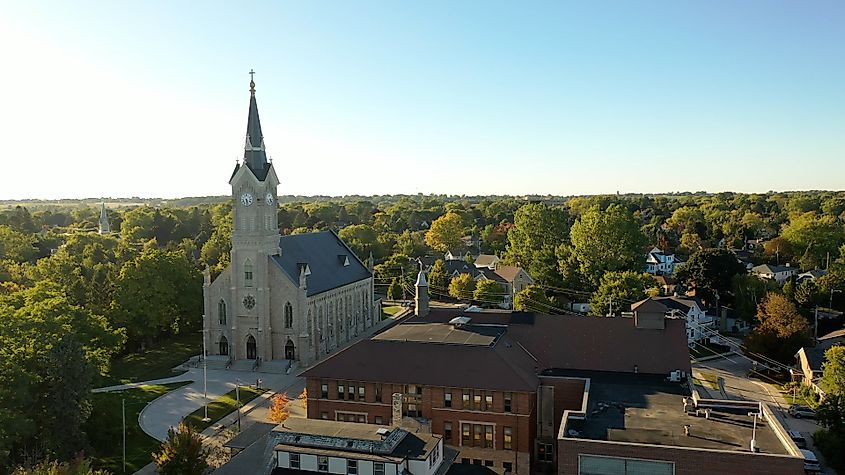
Perched on a bluff above the town, St Mary’s has several distinguishing features standard to Gothic design. Its limestone tower extends to an eight-sided spire with a cross at the very top. The cross is over 7ft tall and has long been a landmark for sailors on Lake Michigan. The church’s bell tower contains three bells which produce an unusually full sound when rung for services and special occasions. The tower also includes a four-dial clock that the town donated to the church in 1885.
Before visiting St Mary’s, check with the Port Washington Historical Society. This local group occasionally offers guided tours of the church and its grounds, and will be able to provide more information on its history and opening hours.
St Luke’s Episcopal Church, Racine
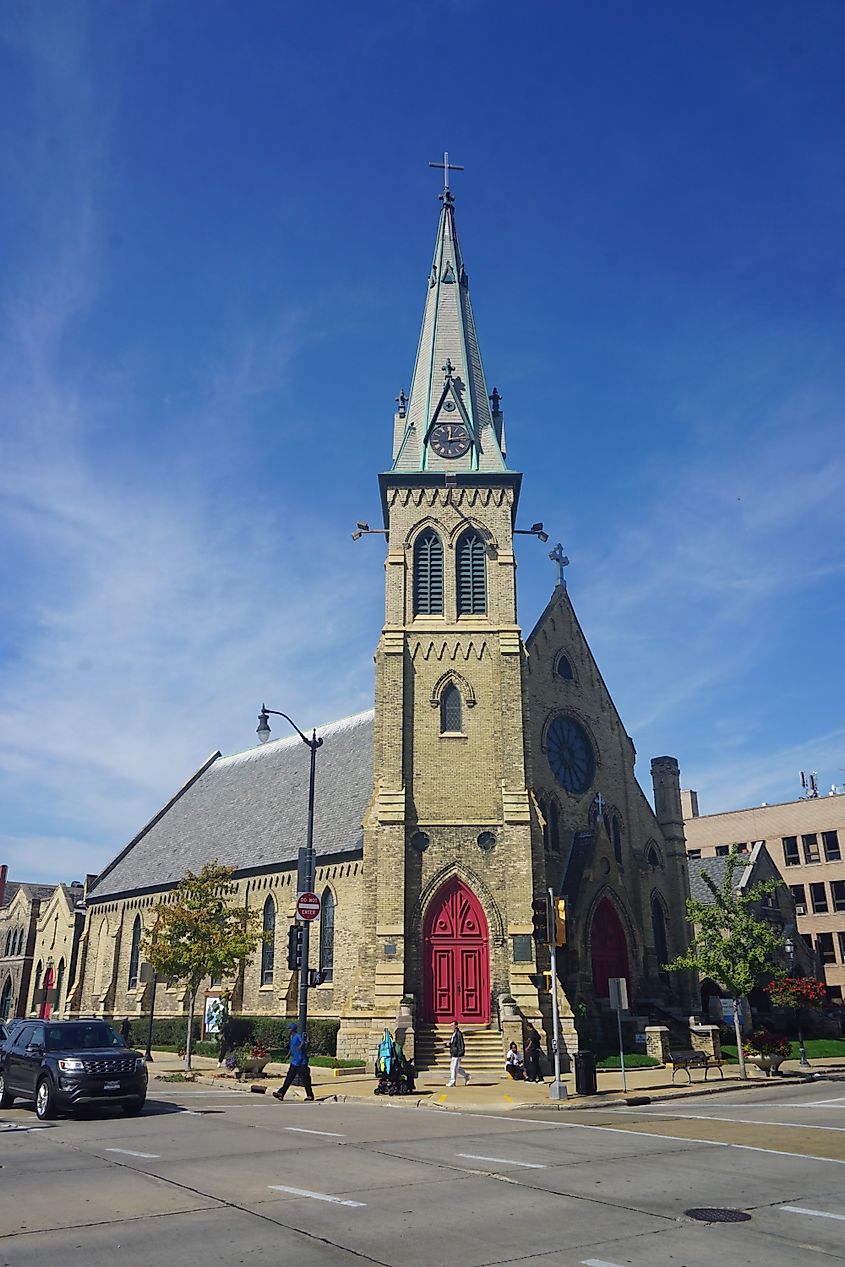
Serving Racine for over 175 years, St Luke’s was first built on Main Street in 1836 but that original building wasn’t to last. It was destroyed in a fire in 1866 and the current Gothic-style building was quickly erected in its place. The property, along with its rectory, is listed on the National Register of Historic Places.
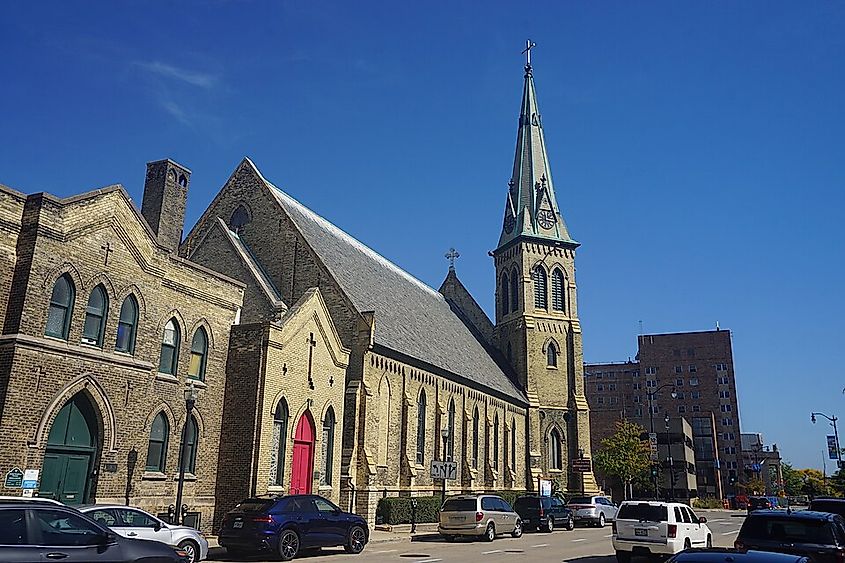
Built in the English Gothic Revival style, the church is dominated by its clock tower and spire which sits at the intersection of four street corners. Church bells were added in 1887 as the English settlers were nostalgic for the sound of pealing bells from their home villages. The building is constructed with local yellow brick and has a bright red door. Inside, the nave of the church features two custom-made chandeliers, installed in 1927 and suspended from the ribbed black walnut ceiling, and a classic rose window in glowing red, gold, and blue. The church still has its original black walnut pews.
The Basilica and National Shrine of Mary, Help of Christians
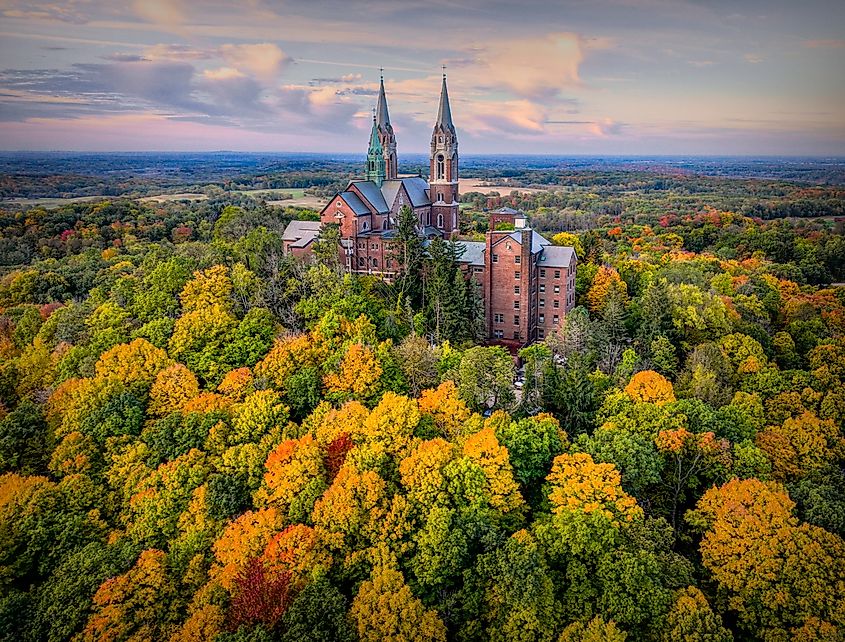
Also known as ‘Holy Hill’, around half a million people visit this special site every year to see the impressive Basilica which blends neo-Romanesque and neo-Gothic architecture to create a stunning hilltop shrine set on 435 acres.
Jesuit missionaries first discovered the area in the 1600s, dedicating it to Mary and placing a cross on the hill. Throughout the centuries, its reputation as a holy site grew but the present church wasn’t completed until 1931. Today visitors come on pilgrimages, to tour the church, to take part in retreats, or to picnic in the peaceful grounds.
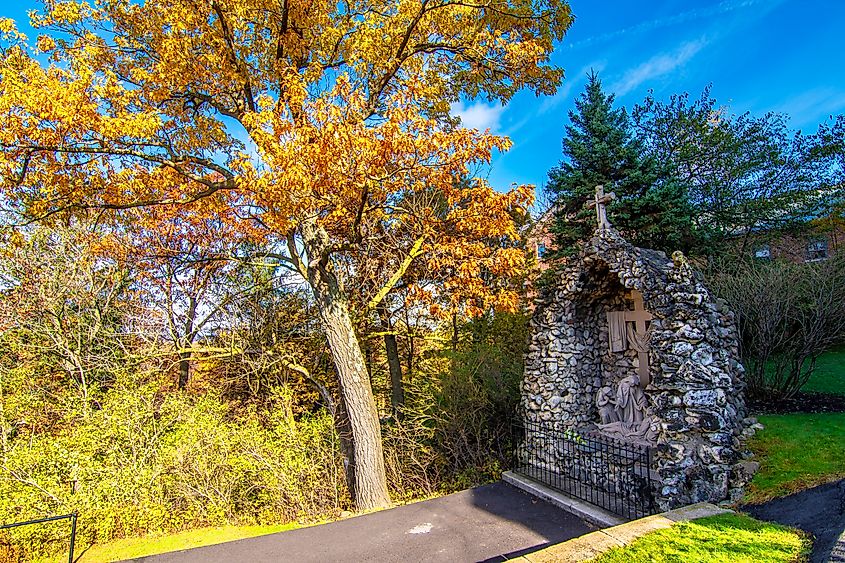
A unique hybrid of Romanesque and Gothic, the Basilica has several hallmarks of Gothic architecture including its majestic twin spires that can be seen for miles in every direction. The church also boasts the vaulted ceilings and pointed arches that Gothic architects used to draw worshipper’s eyes heavenward. Once you’ve toured the inside of the church, take a trip up the scenic tower, climbing 192ft to be rewarded with panoramic vistas of the forested Kettle Moraine. The view is charming in fall when the autumn foliage is at peak color.
The Basilica and National Shrine of Mary at Holy Hill is open to the public daily from 6am to 4pm.The grounds close at 4pm and the property also has a gift shop and cafe. The scenic tower is closed from November to April.
St. John Chrysostom Episcopal Church, Delafield

St. John Chrysostom Church in Delafield, Wisconsin. Wikimedia Commons.
Listed on the National Register of Historic Places, St John Chrysostom is not your typical Gothic church. The small, rural chapel is one of the most stunning examples of so-called ‘carpenter gothic’ architecture in the country. Carpenter Gothic is a North American spin on Gothic Revival where elements of Gothic architecture are incorporated in wooden structures. Wooden trims and spires have earned them the nickname of gingerbread houses.

St John Chrysostom was built in 1851. Its founder, Ralston Cox, drowned in the Ohio River before the church was constructed but his family took up his plans and finished the building to commemorate his vision. Made entirely of oak from local trees, the church has preserved a number of its original features including handmade door hinges crafted by local blacksmiths, the board-and-batten bell tower, and the wooden pews and pulpit. Inside, you’ll see a stained glass window commissioned in memory of Ralston Cox.
Gothic architecture endured for three centuries, leaving us with spectacular buildings and historic landmarks that provide a window through time. Given its long history, it’s no wonder that the term covers a range of different styles, from neo-Gothic to Gothic Revival, all of which preserve the original emphasis on beauty and grandeur while adding their own distinctive touches.
Settled by French and English pioneers, Wisconsin boasts many examples of grand Gothic structures in its big city churches and small town chapels. Take a wander around these special and sacred spaces to experience an often overlooked part of the state’s heritage. Whether you’re just passing through or enjoying a long midwest getaway, spending a few hours marvelling at the timeless beauty of these impressive churches will be the highlight of your trip.
